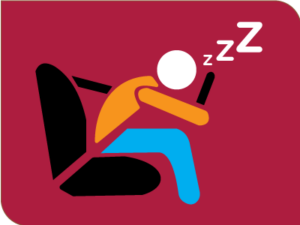For some people, the workday begins just as others turn in for the night. Third-shift workers typically work from 11pm – 7am in fields such as healthcare, security, and manufacturing. These employees face unique challenges, most significantly their drive home at the end of their shifts. Studies show that night shift workers are three times more likely to be involved in drowsy driving crashes.
According to the National Highway Traffic Safety Administration (NHTSA), “drowsy driving crashes occur most frequently between the hours of midnight and 6 am.” During these early morning hours, our bodies naturally crave sleep due to a drop in our circadian rhythm, which is the internal clock that regulates our sleep-wake cycle. Shift workers, especially those with Shift Work Sleep Disorder (SWSD), are especially likely to feel drowsy during their commute home because their natural sleep cycle is disrupted.
Recognizing the signs of drowsy driving is crucial in preventing crashes. If you experience any of these symptoms while behind the wheel, pull over to a safe location and rest before continuing your journey.
- Frequent yawning or difficulty keeping your eyes open.
- Nodding off or having trouble keeping your head up.
- Inability to remember driving the last few miles.
- Missing road signs or turns.
- Difficulty maintaining your speed.
- Drifting out of your lane.
Here are some adjustments for third-shift workers that can reduce the risk of a crash.
Short-Term Post-Shift Changes:
- Take short naps before driving home to help combat immediate feelings of sleepiness.
- Engage in light physical activity or stretching to increase alertness.
- Avoid heavy meals or caffeine before driving, as these can interfere with sleep quality later.
Long-Term Daily Routine Changes:
- Establish a consistent sleep schedule, even on days off, to help regulate your body’s internal clock.
- Create a sleep-friendly environment at home, with minimal light and noise, to improve the quality of your sleep during the day.
- Consider discussing alternative shift schedules or job rotations with your employer to minimize the impact of SWSD on your health and safety.
If you’re experiencing ongoing difficulties with sleep or suspect you may have SWSD, consult with a healthcare professional for personalized advice and treatment options.
Stay safe and alert on the road, especially after a night shift!




